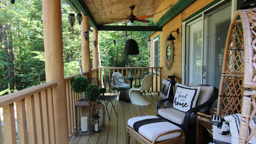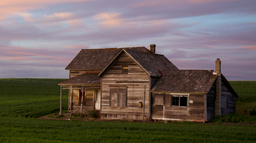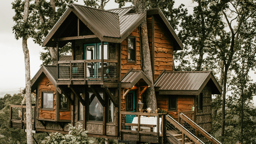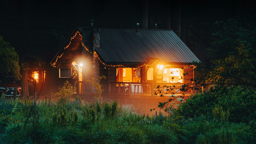
Thoughts turn toward the great outdoors when the weather gets warmer: visions of heading back up to the cabin for a long weekend, finally taking the boat out on the lake again, and spending summer nights around the campfire with family and friends. But as those summer nights get hotter and hotter, the risk that a small campfire could spread and start a blazing wildfire increases just as much. That’s why the United States Forest Service uses its fire restriction system to stop dangerous activities when the risk of starting a fire is high.
At the time of this interview, Sheryl Page was the Acting Assistant Director for Cooperative Fire Protection in the Forest Service’s Rocky Mountain Region. She explains that the purpose of fire restrictions is “to protect human life and property by reducing the risk of human-caused fires during prolonged periods of unusually high fire danger”.
There are two stages of fire restrictions, with Stage 2 being more restrictive than Stage 1. For example, you’re still allowed to have a campfire in a Forest Service-approved fire ring at a campground during a Stage 1 restriction, but campfires are prohibited entirely at Stage 2. Other activities that fire restrictions limit include shooting guns, smoking, and using tools like chainsaws or torches.
The Forest Service examines numerous factors when deciding whether to implement a fire ban. Obvious factors, like weather and the conditions in the forest, as well as not so obvious factors, like an expected influx of visitors on holidays and the availability of resources nearby to put out fires.
“Each forest looks at these and works with their neighboring fire agencies to determine whether or not to go into fire restrictions,” says Page. Fire restrictions can differ from place to place, so it’s always important to stay informed and know what you’ll be allowed to do before planning a trip to a national forest.
“Each forest looks at these and works with their neighboring fire agencies to determine whether or not to go into fire restrictions,” says Page. Fire restrictions can differ from place to place, so it’s always important to stay informed and know what you’ll be allowed to do before planning a trip to a national forest.
Page also assures that fire restrictions aren’t there to ruin anyone’s fun.
“We try to ensure that they are implemented on the smallest geographic scale to affect the fewest number of people,” she says. They also don’t like to make fire restrictions any longer than they need to.
“The duration of the order is based on evaluation of risk over an extended period of time,” Page adds.
“The duration of the order is based on evaluation of risk over an extended period of time,” Page adds.
While fire restrictions can technically only be enforced on national forests and grasslands, it’s still a good idea to pay attention to them and heed their limitations on private property; any surrounding forests and grasslands are likely at the same level of high fire risk.
So if you have plans to go camping or head up to the cabin during the hottest months of the year, make sure to stay up to date on the latest fire restrictions and bans and always follow the proper guidelines. Not just for your own safety, but also to help preserve our national forests and grasslands for the enjoyment of all, today and in generations to come.










